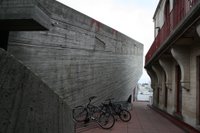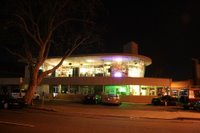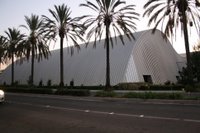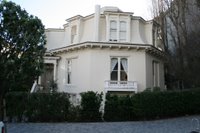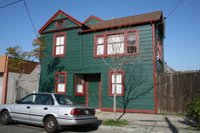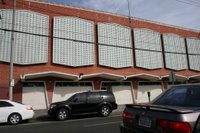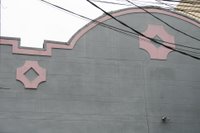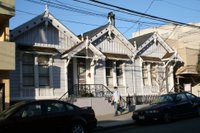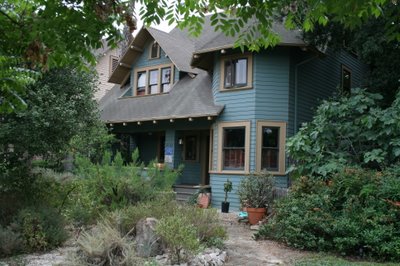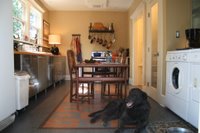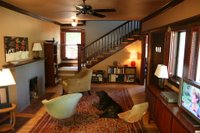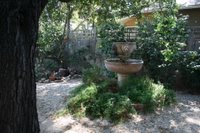
1. You spearheaded the creation of an on-line community web-site for the Jefferson Park neighborhood. Why?
The short answer is that a group of neighbors were meeting to discuss the proposed development on 4th and Jefferson.
It was clear to me that we needed a place to share photos and documents. A small part of my motivation to take it on myself was fear that someone else would propose a Yahoo Group, which I really find to be awkward.
We also had been sharing information ad-hoc, with people emailing each other with the somewhat random lists of neighbors they had happened to accumulate in their address books. I know people are sensitive about not spamming each other, but at the same time, they weren't sure how to reach out effectively to communicate about local issues. So people limited themselves to sending out only really big news.
The slightly longer answer is that I have had a lifelong interest in software tools for collaboration. I set up my first online service in high school. A chunk of my career was spent writing corporate databases, which are collaboration tools for structured knowledge. I've also set up wikis for a couple different clients, and have found that to be a very effective tool as well.
Obviously, for those who have online access, communicating online is faster, more time efficient, and allows more people to participate. It's totally conceivable that 50 or 100 or 200 people will log on daily or weekly for news updates or to comment, and it's obvious that no one would even suggest getting 100 neighbors together every weekend in person to discuss neighborhood news. It would be ludicrous. That said, I think meeting people in person helps build trust much faster than an online only interaction. It is nice that I recognize many names on the web forum. But a lot of names are new to me as well. I'm looking forward to meeting everyone, just not every month in a giant meeting!
I also consider this online group a bit of a laboratory. I have theories about how a tool like this might be improved and made more effective, and so I hope to have time to create some useful enhancements for it.
2. Have you a pet peeve, a thing you'd most like to change?
I have a complete menagerie of peeves. But one of my Los Angeles pet peeves is my perception that zoning seems to have allowed auto-repair shops to set up anywhere. I wish there would have been the foresight to encourage them to cluster a bit more effectively. Look at the multiple furniture stores at Helms Bakery, or restaurant supply row on Washington Blvd. I realize these two examples probably weren't created by zoning decisions, but I just point out that competitive businesses can be closely grouped and still work economically, and even out-compete businesses that are not part of a cluster.
Then we would have had all the blight in one (or 10) big ugly Mad Max thunderdomes, instead of sprinkling the ugly evenly throughout the city. I don't see auto-repair shops scattered around the pedestrian friendly areas of Westwood, Culver City, Santa Monica or Beverly Hills. So it must be possible to not screw that up.
Of course, this is a somewhat pointless pet peeve, because I don't currently have any ideas about how to mitigate what's been done.
3. What's the SOJE card night?
I think you mean South of Jefferson Card Night. Heidi Rudd kept an email list and encouraged a lot of the new residents to meet at a monthly card night. Hosting was rotated among participants, usually just 6pm to 8pm, and kid friendly. It was a chance to meet neighbors, but hosting is a lot of work, and card night has been on hiatus as far as I know.
4. What's the rudest thing ever said about your home buying decision (i.e., neighborhood)?
Hmmm. No real rude comments, but perhaps the accidentally telling "Hey, this isn't so bad..." 5. What's the future of Jefferson Park?
Jefferson Park has multiple cultures that share a physical space, but travel in parallel cultural dimensions. Visions that include more than one culture may be able to harness more passion. Perhaps.
The future of Jefferson Park will be determined by the number of people who have a vision for what Jefferson Park could be, and whether they know how to work the system to implement that vision. "People" could refer to residents, absentee landlords, or developers. Too few residents engaged in monitoring the changes to their physical space will allow others to set the agenda.
Practically, we are under served in a variety of categories and we have a struggling business corridor. It seems to me that the key turning points for pedestrian friendly commerce in Westwood, the Santa Monica Promenade, and Culver City all seemed to be linked to zoning, streetscaping, and city subsidized parking. I'm not advocating that Jefferson Park be a regional shopping destination, but there should be a way to improve the business corridor to both the benefit of residents and merchants.
Labels: Guest Contributors, Interviews
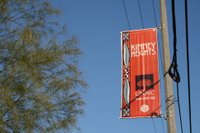 United Neighborhoods Neighborhood Council (UNNC) banners rose recently, along the avenues and boulevards that bound many West Adams neighborhoods. A neighborhood name appears against a field of red-orange above the UNNC icon, a broad, sheltering tree.
United Neighborhoods Neighborhood Council (UNNC) banners rose recently, along the avenues and boulevards that bound many West Adams neighborhoods. A neighborhood name appears against a field of red-orange above the UNNC icon, a broad, sheltering tree. Elsewhere the fledgling Oxford Square-rs unveiled bold signs, a neighborhood coat of arms, helping define their house beautiful district North of Victoria Circle and South of Windsor Village. (North of Pico, South of Olympic, West of Crenshaw.)
Elsewhere the fledgling Oxford Square-rs unveiled bold signs, a neighborhood coat of arms, helping define their house beautiful district North of Victoria Circle and South of Windsor Village. (North of Pico, South of Olympic, West of Crenshaw.)


